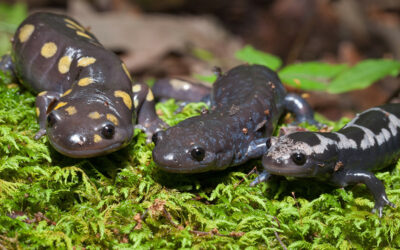Eastern Hellbenders and Appalachian Streams and Rivers: Biology, Ecology, and Conservation
This free comprehensive set of five state-standards-aligned lesson plans and activities are for middle and high school teachers throughout Appalachia (PA, VA, WV, KY, NC, TN, and GA). We highlight the critical need for lifelong environmental stewardship in local rivers and streams by introducing students to important ecological and biological topics ranging from speciation to watersheds, to food webs and endangered species, using the Eastern hellbender salamander as a focal species. All lesson plans follow the 5E format and include all materials needed for instruction.






